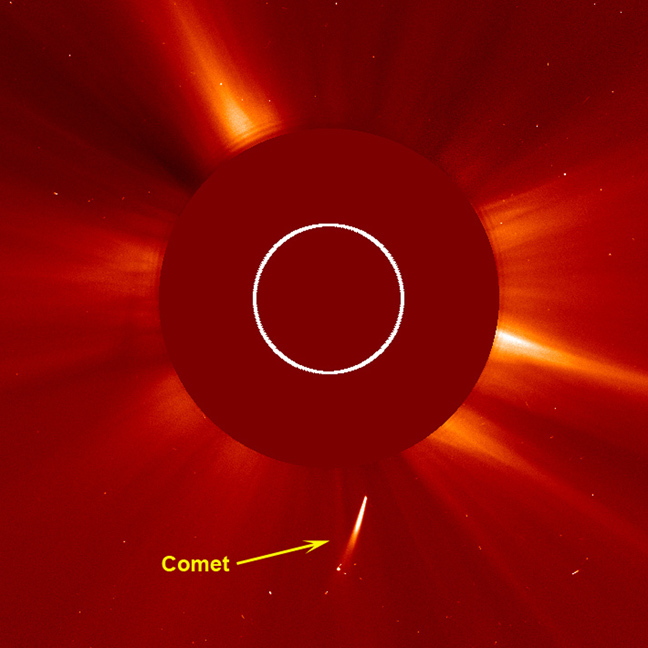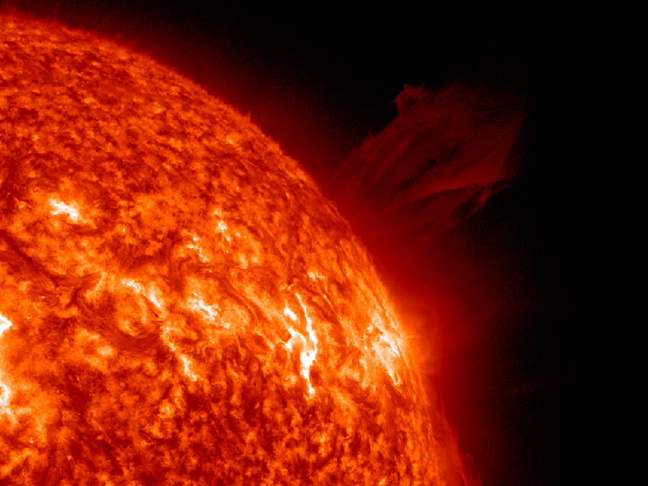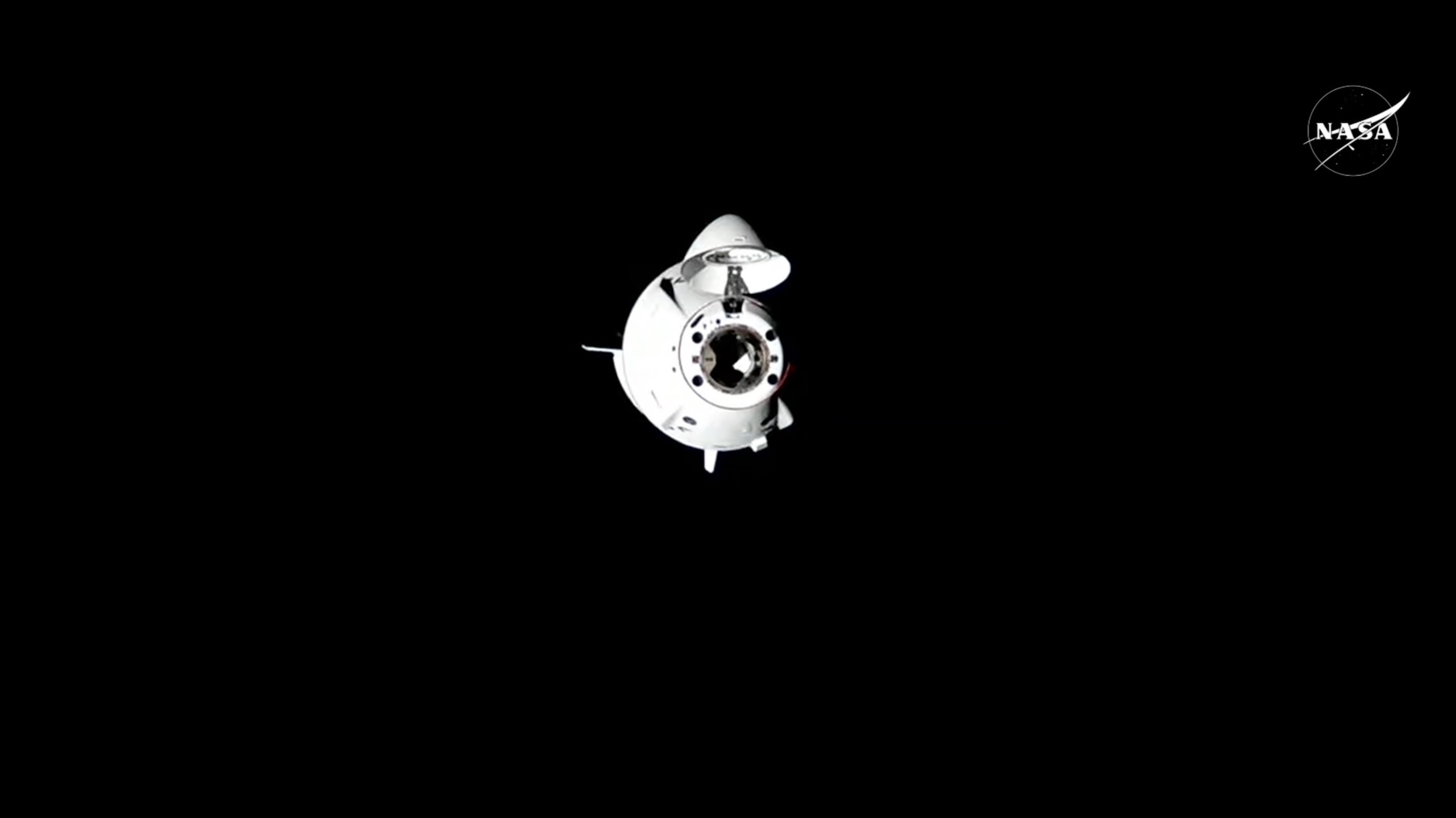Comet Dive-Bombs Sun During Big Solar Eruption

A comet plunged into the sun this week just as a huge eruption exploded from the star's surface, but the two events are likely not related, NASA scientists say.
NASA's Solar and Heliospheric Observatory (SOHO) spotted the ill-fated comet diving toward the sun between Tuesday and Wednesday (May 10 and 11), never to be seen again.
By coincidence, a massive explosion on the sun called a coronal mass ejection also erupted at about the same time. Coronal mass ejections are immense bursts of plasma that hurl solar particles away from the sun at incredible speeds. [Video: Comet Dive Bombs Sun During Eruption]
"Interestingly, a coronal mass ejection blasted out to the right just as the comet is approaching the sun," SOHO officials explained in a statement today (May 13). "Scientists, however, have yet to find a convincing physical connection between sun-grazing comets and coronal mass ejections."
In fact, the coronal mass ejection (CME) actually erupted before the comet could possibly have had any effect, researchers said. And another NASA sun-watching spacecraft, the Solar Dynamics Observatory, has the proof.
According to SOHO officials, "images from the Solar Dynamics Observatory show that the CME erupted before the comet came close enough to the solar surface to interact with strong magnetic fields." [Amazing New Sun Photos from Space]

The comet was first discovered by amateur astronomer Sergey Shurpakov, SOHO officials added. It is classified as a sun-grazing comet because its path brought it close to the sun.
Breaking space news, the latest updates on rocket launches, skywatching events and more!
Astronomers suspect the comet was part of the so-called Kreutz family of comets. Kreutz comets are comets in orbits that approach within a few hundred thousand miles of the sun.
All Kreutz comets are thought to be the remains of one giant comet that broke apart several centuries ago. They are named after 19th century astronomer Heinrich Kreutz, who first demonstrated that such comets were related.
Coronal mass ejections shoot charged particles from the sun over several hours. Such solar eruptions can spew up to 10 billion tons of plasma and expand away from the sun at speeds topping 1 million mph, NASA officials have said in the past.
The sun is in the midst of an active phase of its 11-year solar weather cycle. The current cycle is known as Solar Cycle 24. The SOHO program a joint mission by NASA and the European Space Agency.
You can follow SPACE.com Managing Editor Tariq Malik on Twitter @tariqjmalik. Follow SPACE.com for the latest in space science and exploration news on Twitter @Spacedotcom and on Facebook.
Join our Space Forums to keep talking space on the latest missions, night sky and more! And if you have a news tip, correction or comment, let us know at: community@space.com.

Tariq is the Editor-in-Chief of Space.com and joined the team in 2001, first as an intern and staff writer, and later as an editor. He covers human spaceflight, exploration and space science, as well as skywatching and entertainment. He became Space.com's Managing Editor in 2009 and Editor-in-Chief in 2019. Before joining Space.com, Tariq was a staff reporter for The Los Angeles Times covering education and city beats in La Habra, Fullerton and Huntington Beach. In October 2022, Tariq received the Harry Kolcum Award for excellence in space reporting from the National Space Club Florida Committee. He is also an Eagle Scout (yes, he has the Space Exploration merit badge) and went to Space Camp four times as a kid and a fifth time as an adult. He has journalism degrees from the University of Southern California and New York University. You can find Tariq at Space.com and as the co-host to the This Week In Space podcast with space historian Rod Pyle on the TWiT network. To see his latest project, you can follow Tariq on Twitter @tariqjmalik.
